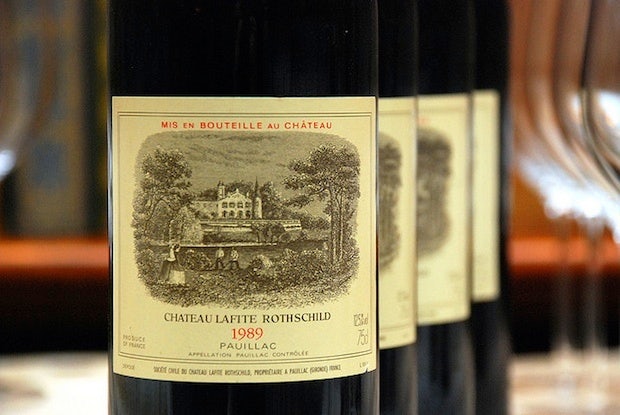
Château Lafite Rothschild has had major problems with counterfeiting in China. (Flickr/Norman27)
As with many luxury goods, China has a major problem with counterfeit high-end wine, but the country’s increasingly sophisticated and knowledgeable buyers are becoming savvier about distinguishing the real from the fake.
According to recent reports, fake bottles of rare wine were a major problem worldwide this year, and China was certainly not immune to the problem—especially when it comes to top-shelf Bordeaux. In five-part series of articles on fake wine in China published last month by China counterfeit specialist Nick Bartman, he estimates that 70 percent of the purportedly top-shelf wine he came across was fake. A Daily Mail article reports on a recent extreme example of exposed counterfeiting originating from China, and why more people don't speak up about it:
One billionaire businessman unknowingly spent more than £3million on between 500 and 600 bottles of counterfeit Bordeaux wine.
Others are believed to have spent similar amounts of money - but are too embarrassed to confess to being the victims of fraud.
The fake bottles - most of which were picked up in China - were exposed by French customs and fraud agents.
However, many of the counterfeits coming out of China until now have been glaringly obvious, such as bottles with labels claiming to be from the massively popular Domaine de la Romanée-Conti in France’s Burgundy region being labeled with the logo of Château Lafite-Rothschild, an immensely popular brand of Bordeaux. However, counterfeiters are finding it much harder to trick China’s increasingly sophisticated and knowledgeable wine aficionados, who are doing their research before shelling out massive prices for high-end bottles. According to a new Associated Press report:
China's case is a good illustration of the evolution of counterfeiting. Initially, criminals took advantage of the country's twin weaknesses: consumers who were new to wine, and the fact they had the money to buy it for show.
That led to a flagrant production of fakes, whose labels simply piled on the names of as many famous vineyards and locales as possible.
For top vineyards, rampant counterfeiting can be highly detrimental to brands hoping to command top prices. Château Lafite Rothschild Bordeaux has especially struggled with the problem in recent years. The brand’s previously high market position led to a flood of fake wine filling the market, thus dampening its image. Now that Domaine de la Romanée-Conti has ascended as a king of the China market, it's facing the same problem as one of the top brands known for being counterfeited.
As a result of Chinese buyers’ growing awareness of counterfeits, fakers are becoming more sophisticated in their methods, often filling up empty, real bottles from top vineyards. As a result, bottlers are taking greater efforts to combat the problem, introducing laser-engraved unique serial numbers and special ID tags that shred if the bottle is opened.